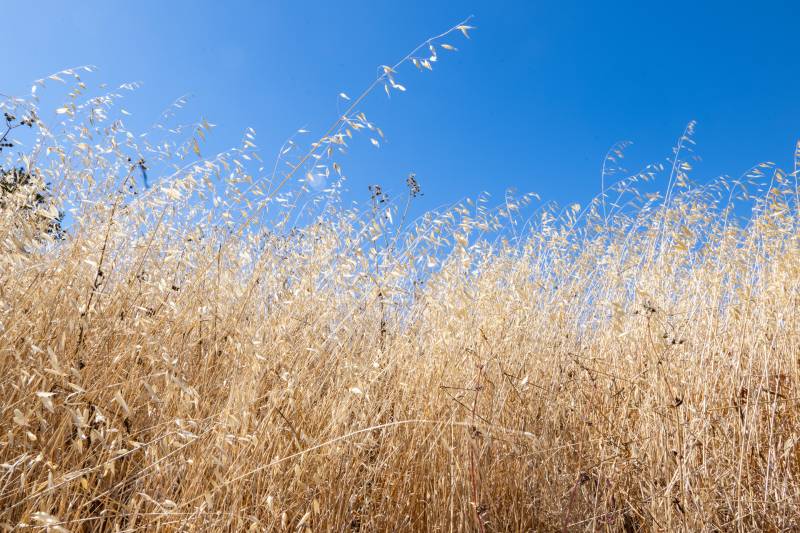The series of 31 atmospheric rivers that drenched California this past winter has wildfire officials and scientists breathing sighs of relief — for the most part.
According to a coalition of state and federal fire directors, which puts out regular predictions about wildfire season in Northern California (PDF), the potential for significant fires this year is normal to below normal.
That Northern California Geographic Area Coordination Center’s prediction comes from a compilation of factors, chief among them weather (past, present and future) and fuel moisture (how much water trees and plants are holding onto). Given the wet, cool winter and spring months, this year’s fire season is off to a slow start. The ground is still wet and grasses, shrubs and trees are holding onto that moisture, making them less likely to burn.
“It’s the same thing as when you try to start a campfire: You don’t use wet wood. It’s very hard to get wet wood to ignite,” said Craig Clements, director of the Wildfire Interdisciplinary Research Center at San José State University.
But what about all that extra vegetation?
Maybe you’ve heard that all that rain means more vegetation, and that more vegetation means more fuel for wildfires. That’s true — but only in certain ecosystems.
For example, you might’ve noticed grasses are extra tall this year due to all the rain. Grassland ecosystems are certainly more dense this year and once those grasses cure, they’ll be primed for burning. Thus, if conditions are ripe for fires in August, September and October, grassy environments could be at increased risk. That risk could spill over into next year, too, depending on the weather.
“This year is going to be more a function of the soil moisture content being so high,” said Clements. In other words, because grasses, shrubs and trees are holding onto their moisture longer than usual, the window for them to cure — and for severe wildfire risk — is narrower.
Plus, Clements added, grass fires are among the least concerning to firefighters.
“They’re dangerous, they spread rapidly, but aircraft suppression works really well on grass fires,” he said.
Cal Fire ramped up its flight suppression last year, which the agency said helped prevent wildfires from blazing out of control.
So where will fires be worst this year?
In short: likely in the coastal grasslands.
“If we do get significant heat waves or wind events in August, September and October, there could be a high level of fire activity in [the grasslands],” UCLA climate scientist Daniel Swain said in a recent live YouTube video.
